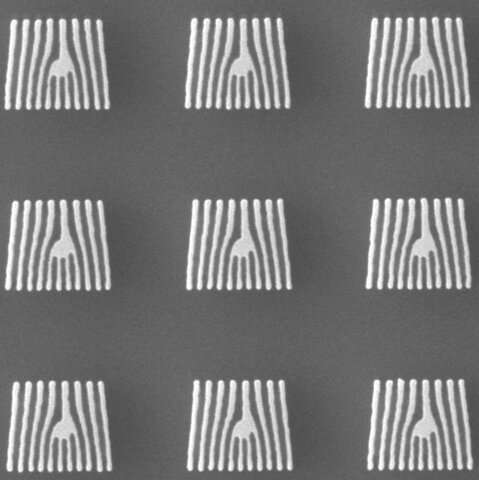Credit: University of Waterloo
What are these microscopic zebra-striped squares, and why did scientists painstakingly arrange more than 6 million of them on a silicon plate just half a centimeter wide?
The squares are a type of diffraction grating, which causes waves that travel through to bend as they pass (similar to ocean waves hitting a breakwater). That's beneficial to neutron scientists, who want to make beams of neutrons more effective at exploring the interiors of objects.
Neutrons can penetrate solid objects and reveal internal details that X-rays cannot. While X-rays are absorbed by heavier elements such as the calcium in our bones, neutrons are useful for examining materials that contain the light element hydrogen, which doesn't stop X-rays but reflects neutrons.
However, scanning beams disperse quickly after emerging from the beam's aperture. That limits what scientists can see. Researchers at the NIST Center for Neutron Research (NCNR) have been working on a solution, developing an idea that guest scientists from the University of Waterloo recently built.
Here's how it works: A scanning beam of neutrons passes through the small silicon plate. The neutrons fly through the square grating, twisting between the zebra-striped structures. Their movements cause twisting waves to form on either side of the neutrons. Those waves extend our researchers' vision farther away from the source than usual.
The groundbreaking accomplishment provides a new avenue for researchers to study next-generation quantum materials.
Provided by National Institute of Standards and Technology
























